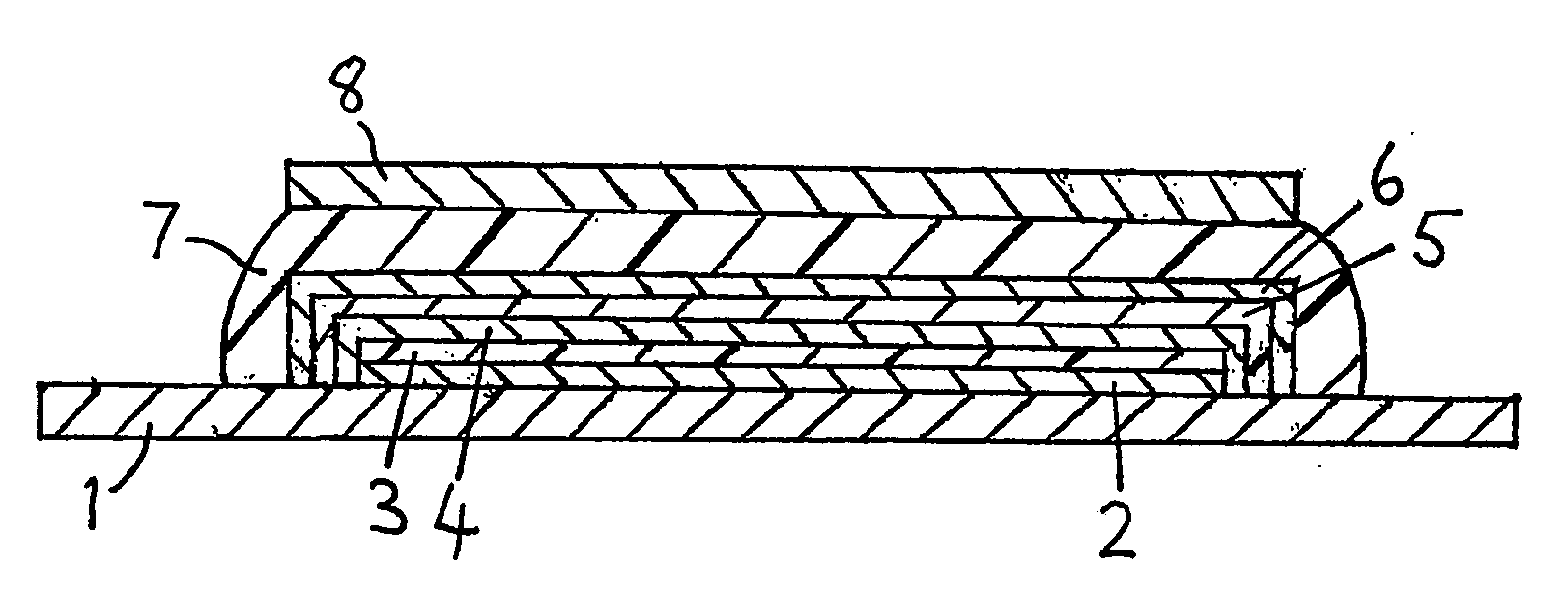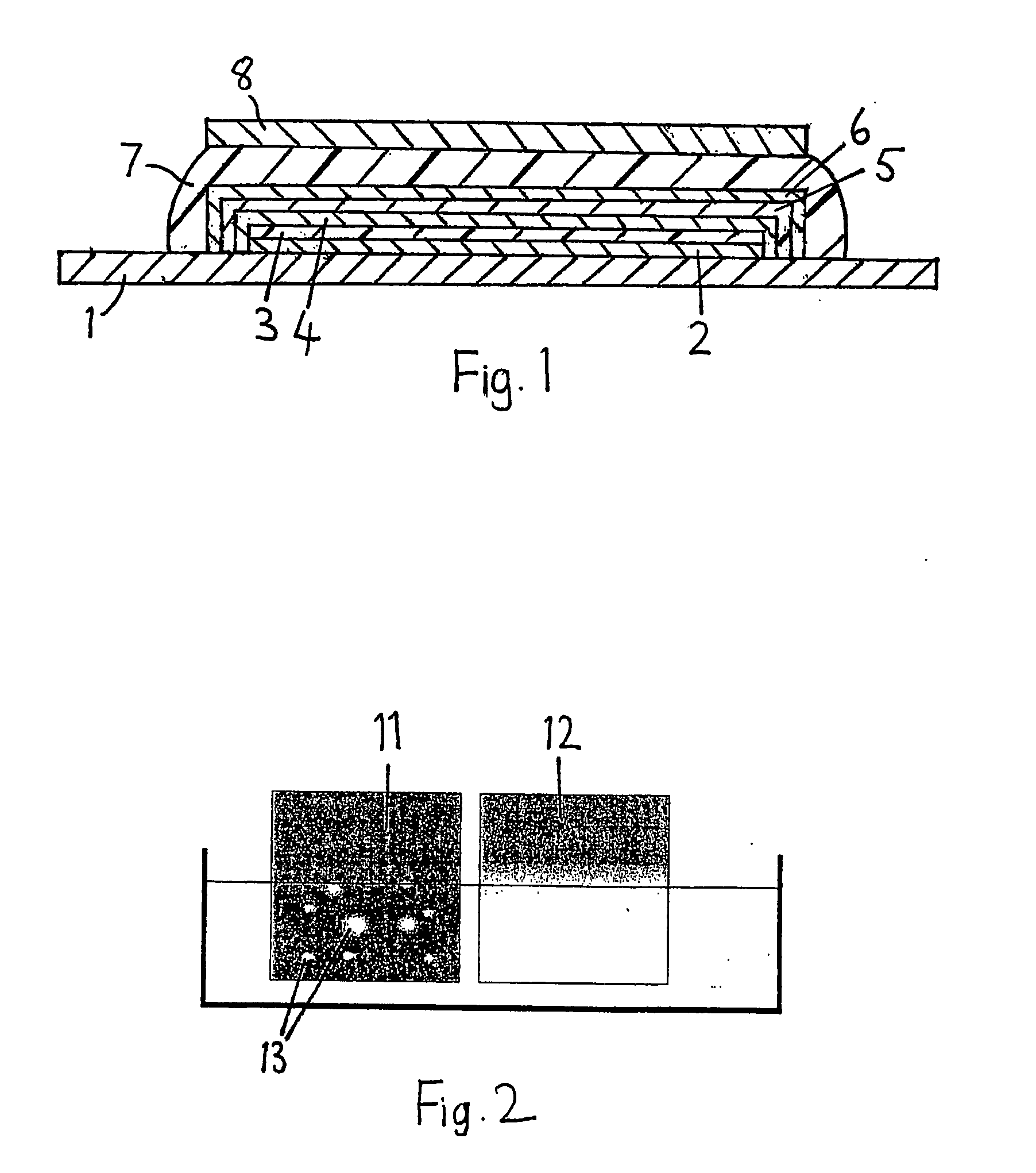Passivation layer
a technology of organic light-emitting diodes and passivation layers, which is applied in the direction of discharge tubes/lamp details, organic semiconductor devices, discharge tubes luminescnet screens, etc., can solve the problems of thermally deposited cracks of most inorganic salts on cooling, and achieve the effect of few pinholes
- Summary
- Abstract
- Description
- Claims
- Application Information
AI Technical Summary
Benefits of technology
Problems solved by technology
Method used
Image
Examples
Embodiment Construction
[0024]FIG. 1 shows a top-emitting PLED device comprising a silicon substrate 1, a nickel anode 2, a light emitting polymer layer 3 and a transparent calcium cathode layer 4.
[0025] A passivation layer 5 of boron oxide is deposited on the calcium layer 4 by thermal evaporation. This process comprises simply heating the boron oxide to evaporate it under a suitable vacuum and is the same process used for depositing the calcium layer 4. Boron oxide evaporates at about 1000° C. The thermal evaporation process does not damage the light emitting polymer layer 3 or the calcium layer 4.
[0026] The boron oxide layer 5 is “conformal”, i.e. continuous without pinholes. This is demonstrated by FIG. 2, which shows the results of an experiment comparing silicon dioxide and boron oxide layers. Two test devices 11, 12, each comprised a glass substrate coated with a thin film of calcium. The first device 11 was then coated with a layer of silicon dioxide whilst the second device 12 was coated with a ...
PUM
 Login to View More
Login to View More Abstract
Description
Claims
Application Information
 Login to View More
Login to View More - R&D
- Intellectual Property
- Life Sciences
- Materials
- Tech Scout
- Unparalleled Data Quality
- Higher Quality Content
- 60% Fewer Hallucinations
Browse by: Latest US Patents, China's latest patents, Technical Efficacy Thesaurus, Application Domain, Technology Topic, Popular Technical Reports.
© 2025 PatSnap. All rights reserved.Legal|Privacy policy|Modern Slavery Act Transparency Statement|Sitemap|About US| Contact US: help@patsnap.com


